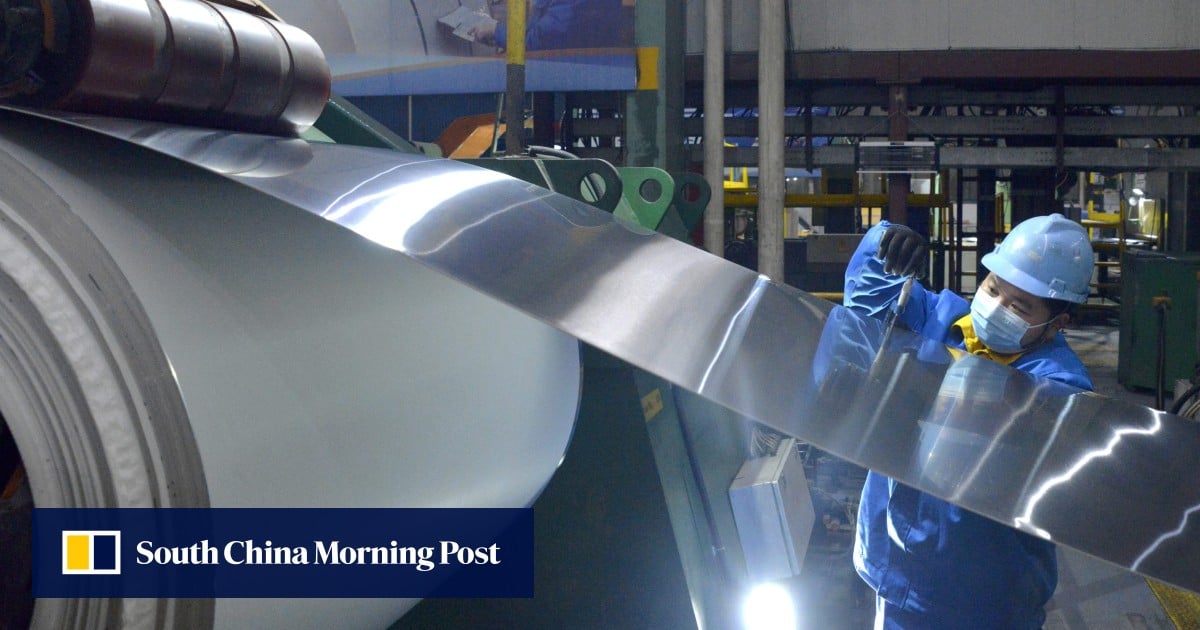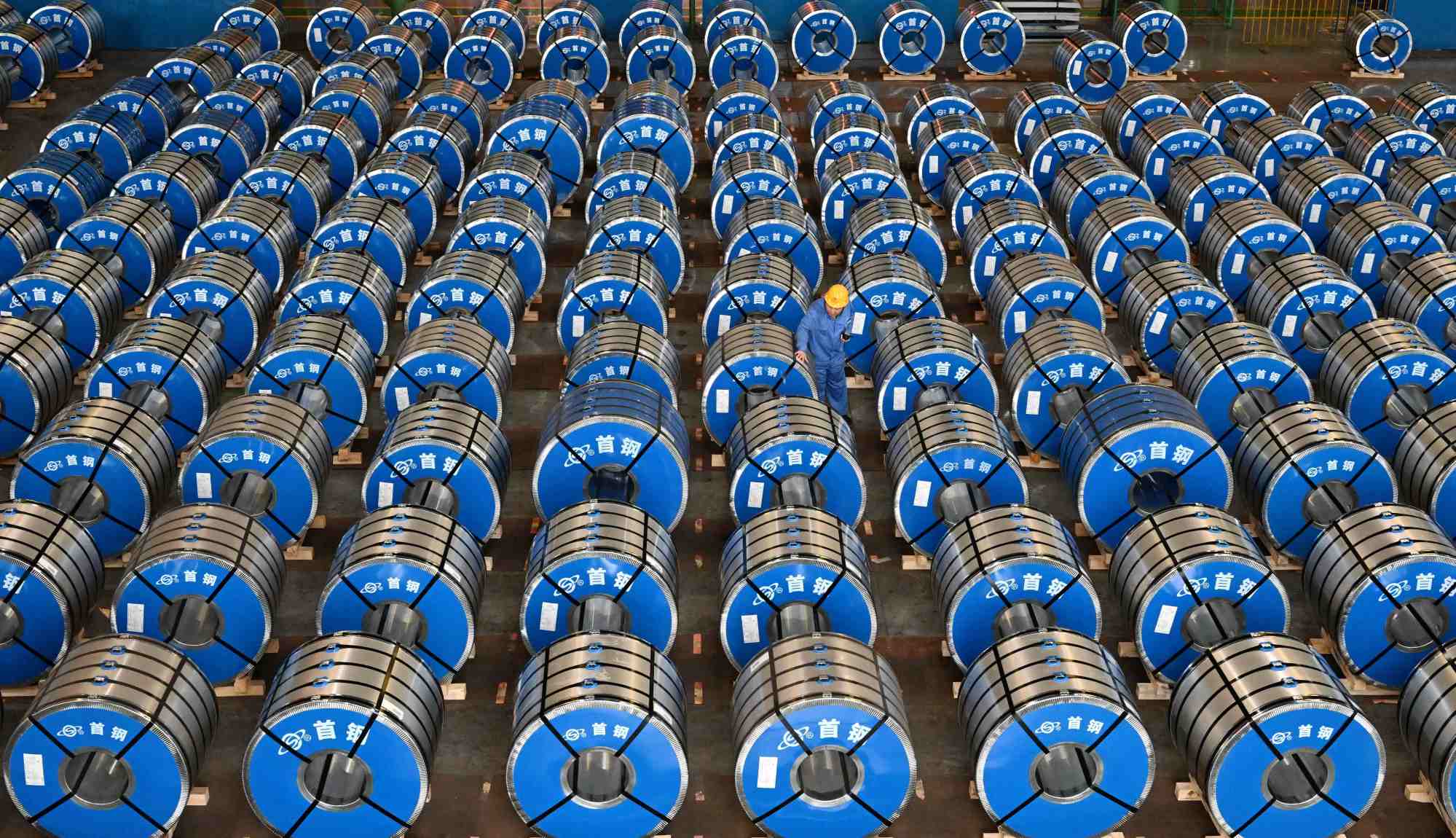
14 Feb EU to blunt China’s edge on steel, aluminium exports as proposed carbon tax could reach 21%: Goldman
The European Union’s move to implement the world’s first tax on carbon-intensive imports from 2026 could badly hit Chinese steel and aluminium makers, according to Goldman Sachs.
The 27-nation bloc is tightening the screws on imported steel, aluminium, cement, hydrogen, fertiliser and electricity with higher greenhouse gas emissions to level the playing field for domestic producers.
The CBAM aims to level the playing field for EU producers of carbon-intensive goods as free emissions allowances issued under the EU’s Emissions Trading Scheme (EU ETS) are gradually phased out, the US investment bank’s analysts said in a report on Monday.

“By subjecting certain imported goods to a carbon price equivalent to requirements for domestic EU production, the EU intends to mitigate any competitive disadvantage to imports from nations without carbon pricing mechanisms.”
For aluminium, the levy for Chinese exporters may start at 3 per cent before rising to 7 per cent in 2032. The levy could triple if the EU chooses to also slap duties on smelters’ indirect emissions in the future, the analysts said.
How Chinese exporters must prepare for the EU’s emissions duty on imports
How Chinese exporters must prepare for the EU’s emissions duty on imports
The exact import duty is not yet certain, since it will be offset by any carbon tax mainland China imposes on its own emission intensive sectors by 2026, and the levy will vary according to the prevailing EU ETS carbon price.
Baoshan Iron & Steel, Citic Pacific Special Steel, Nanshan Aluminium, and Dingsheng New Materials are among exporters with the greatest potential revenue covered by the EU’s carbon tax mechanism, the analysts said.
Goldman’s estimates were based on an EU carbon price of US$70 per tonne of carbon dioxide emissions in 2026, and the assumption that current industry emission intensity stays the same until then.
Is the EU sharpening its ‘trade weapons’ toward China with carbon import tax?
Is the EU sharpening its ‘trade weapons’ toward China with carbon import tax?
Beijing has so far only imposed a mandatory carbon emissions permit trading obligation on electricity generators. Those exceeding the emissions baseline have to buy quotas from less polluting emitters, which is a form of carbon tax.
The regime may be extended to the aluminium, cement and aviation sectors by next year, and to steel, chemicals, paper and glass by 2030, Beijing Institute of Technology’s Center for Energy and Environmental Policy Research said in a research paper last month.
Some US$45 billion of CBAM-covered goods were exported to Europe from Asia-Pacific in 2022, representing 4 per cent of total exports from the region, according to Goldman’s analysts.
Mainland China has the biggest exposure to the impending levy, with US$20.5 billion worth of carbon-intensive goods covered by CBAM in 2022, compared with US$8.7 billion for India and US$4 billion for the US. However, Indian steel exporters are expected to pay higher duties because of their higher carbon intensive steel-making process compared with their Chinese peers.
China’s CBAM-covered exports in 2022 included US$14.6 billion of steel, accounting for 8 per cent of the sector total, while aluminium accounted for some US$5.5 billion, or 14 per cent of exports.
“We expect exposure to rise as the EU CBAM expands to cover all EU ETS sectors by 2030,” Goldman’s analysts said.
